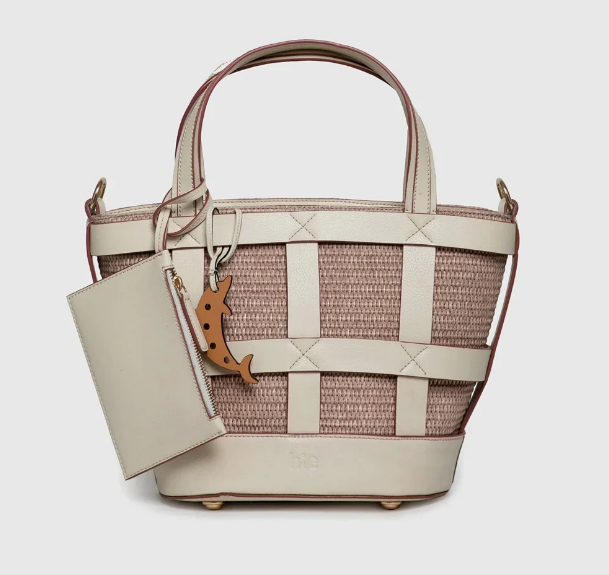Choosing the right handbag for travelling can make a world of difference in your overall experience. Whether you’re heading out for a short city break or a long vacation, the right bag keeps essentials secure, organized, and accessible. It’s not just about style; practicality, durability, and comfort matter equally when picking a handbag for travelling.
In this guide, we’ll help you identify what to look for in a travel handbag. From the size and features to materials and functionality, we’ll cover everything you need to make the right choice.
1. Consider the Size of the Handbag
Size matters when it comes to choosing a handbag for travelling. A bag that is too large might weigh you down, while a small one may not fit all your essentials. For day trips or sightseeing, medium-sized handbags work well. They allow you to carry items like wallets, phones, a small water bottle, and travel documents.
Carry-on handbags, which fit under airplane seats, are ideal for long-haul flights. They give quick access to essentials like headphones, snacks, or chargers. Always check airline size requirements before you purchase a larger travel handbag.
2. Choose a Lightweight Material
The material of your travel handbag directly affects its weight and durability. Lightweight materials like nylon, canvas, or polyester are excellent for handbags used during travel. These materials are also easy to clean and maintain.
Leather bags may look elegant but often add unnecessary weight. If you prefer a leather look, consider faux leather or hybrid materials. Many modern handbags for travelling now combine durability and lightness with water-resistant fabrics.
Additionally, ensure the bag’s seams and zippers are sturdy. Handbags for travelling experience frequent use, so durability is key.
3. Security Features are a Must
While travelling, keeping your valuables safe should be a priority. Opt for handbags with anti-theft features. Lockable zippers, hidden compartments, and slash-resistant straps make the bag more secure. RFID-blocking pockets are also an excellent feature. They protect your cards and passport from digital theft.
Crossbody handbags for travelling are often more secure than shoulder bags. By keeping the bag close to your body, it becomes harder for thieves to snatch or tamper with it. Additionally, bags with inward-facing zippers add another layer of safety.
4. Choose Versatility and Style
A versatile travel handbag allows you to use it in multiple settings. Look for a design that transitions smoothly from day to night. Neutral colors like black, beige, or gray tend to match different outfits.
Convertible handbags for travelling are a great investment. Some designs can switch between a crossbody, shoulder bag, or even a backpack. This gives you the flexibility to adapt to your needs throughout the day.
Style doesn’t have to be compromised for practicality. Many modern handbags are designed with a sleek, stylish appearance while retaining essential travel features.
5. Organization is Key
A well-organized handbag for travelling can save you a lot of time. Multiple compartments allow you to store items neatly. Look for bags with designated pockets for travel documents, keys, and tech gadgets.
External pockets are convenient for holding items you need frequently, such as a water bottle or sanitizer. However, ensure they have secure closures.
Inside the bag, padded sections are useful for tablets or e-readers. Small zippered pockets work well for valuables like jewelry or cash. The better the organization, the less time you’ll spend digging through your bag.
6. Think About Comfort
Comfort should never be overlooked when choosing a travel handbag. If you plan to carry the bag for long hours, prioritize comfort features like padded straps or ergonomic designs. Adjustable straps are important, as they allow you to find the perfect fit.
Crossbody handbags distribute weight evenly, making them comfortable for long days. If you prefer shoulder bags, look for wide straps. Thin straps can dig into your skin and cause discomfort.
Handbags with handles and shoulder straps provide versatility, letting you switch between carrying styles depending on your needs.
7. Water-Resistant Options are Useful
Travel plans don’t always go perfectly. Sudden rain or spills can ruin a regular handbag. That’s why choosing a water-resistant material is a smart move. Nylon, treated canvas, and polyester handbags for travelling often come with water-resistant coatings.
If you’re exploring outdoor locations or unpredictable weather conditions, this feature will save your belongings from getting soaked. Some handbags also include waterproof compartments for items like electronics or important documents.
For extra protection, a small rain cover can be kept in your handbag. This ensures your bag stays dry during unexpected downpours.
8. Consider Your Destination
Your travel destination plays a role in choosing the best handbag. For city trips, a chic, lightweight crossbody bag works well. It keeps items close and secure while fitting the urban aesthetic.
For outdoor adventures, you may need a durable, water-resistant handbag with more space. Bags designed for hiking or day trips usually include features like padded straps, bottle holders, and durable zippers.
Warm-weather destinations require breathable and lightweight materials. On the other hand, colder climates may allow for slightly bulkier handbags that fit scarves, gloves, or other accessories.
9. Check for Tech Compatibility
Tech gadgets are travel essentials for most people. Whether you carry a phone, tablet, or power bank, your handbag should accommodate them safely. Padded sections in travel handbags prevent damage to fragile electronics.
Some handbags for travelling also feature built-in USB ports for power banks. This allows you to charge your devices on the go without fumbling through your bag. Dedicated cable slots and pockets for earphones keep your tech accessories organized.
Handbags with tech-friendly features add convenience, especially on long travel days or during transit.
10. Look for Bags That Offer Easy Access
Travel requires efficiency. Handbags with easy-access features help you grab items without hassle. Exterior slip pockets, magnetic closures, and well-placed zippers make accessing essentials quick and seamless.
When you’re at airport security, easy access to your passport, wallet, or boarding pass can save time. Bags with compartments designed for quick access will reduce stress.
However, make sure these exterior compartments are secure to prevent theft or accidental spills.
11. Test the Bag Before Travelling
Before you take your handbag on a trip, give it a test run. Pack it with items you plan to carry and wear it for a day. This will help you assess its comfort, weight, and practicality.
Are the straps comfortable? Can you access essentials easily? Testing the bag beforehand helps you identify any problems. If the bag feels heavy or disorganized, you may want to reconsider your choice.
By testing the bag, you ensure it meets your needs and enhances your travel experience.
Final Thoughts
Choosing the best handbag for travelling doesn’t have to be overwhelming. By focusing on size, material, organization, and comfort, you can find a bag that perfectly fits your needs. Security features, water resistance, and versatility are equally important.
Take your destination and travel style into account while selecting a handbag. With the right choice, you’ll enjoy stress-free travel and keep all your essentials organized and secure.
Remember, a great travel handbag should combine functionality, comfort, and style. By investing in a bag that meets these criteria, you’ll be ready for any adventure that comes your way.








